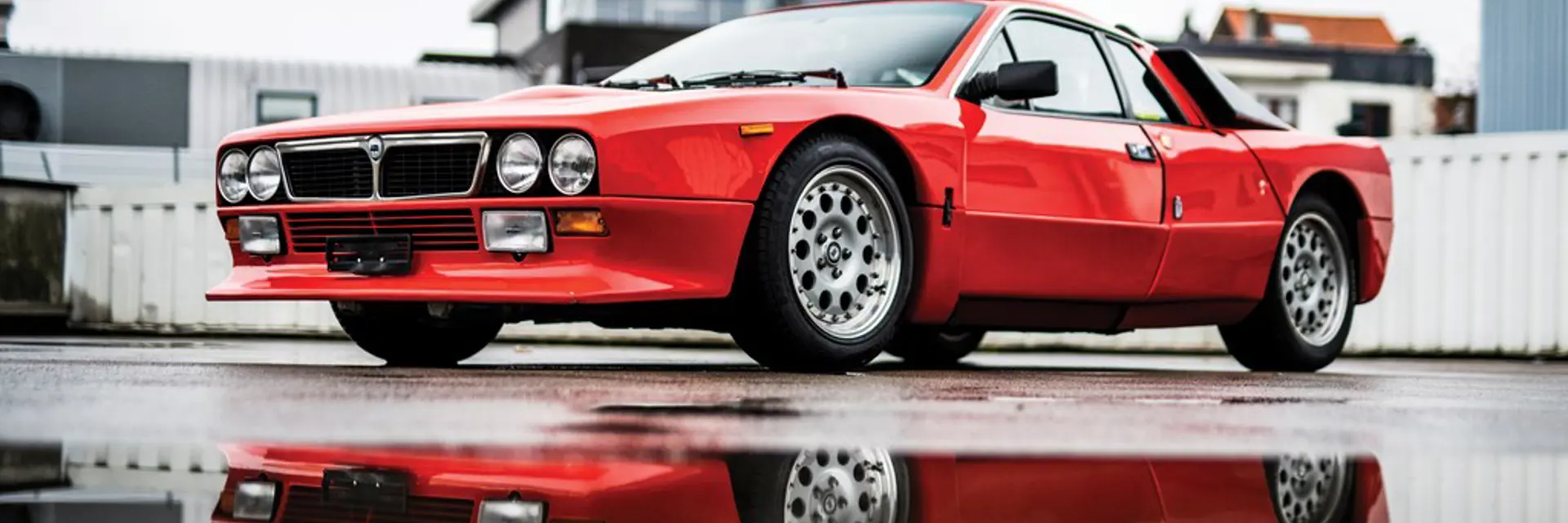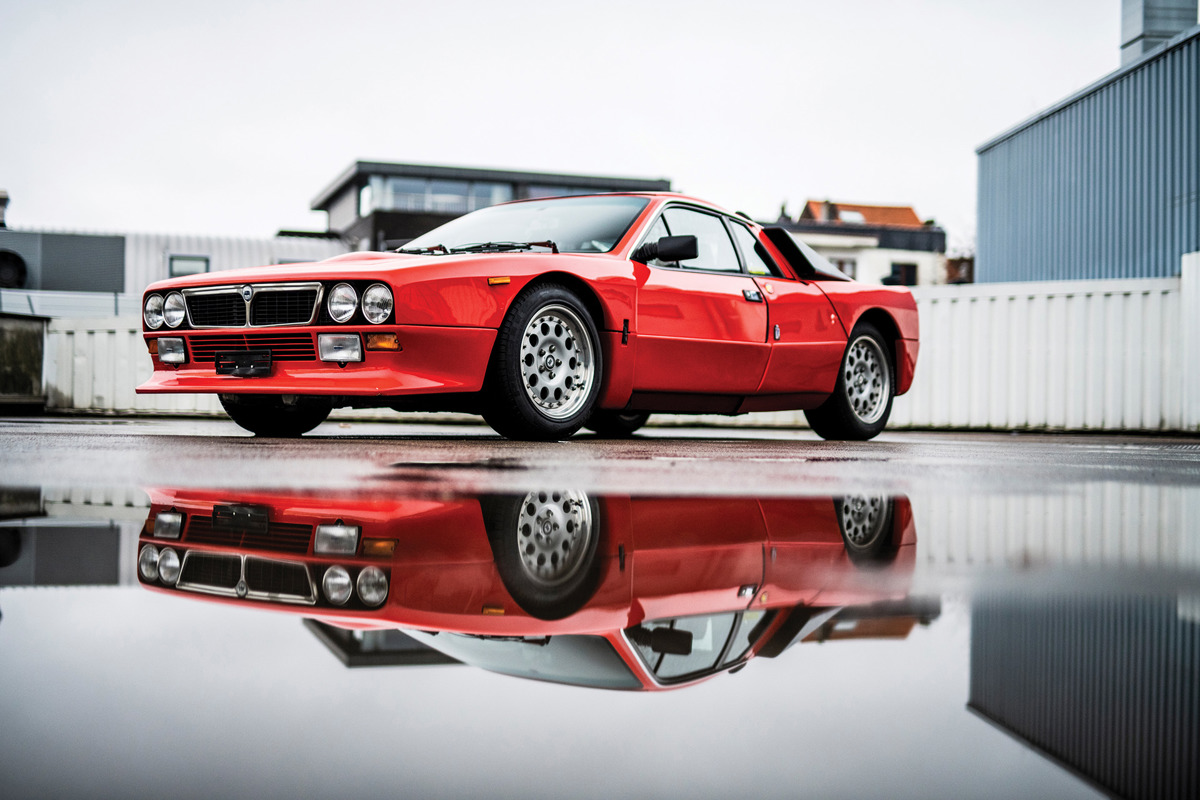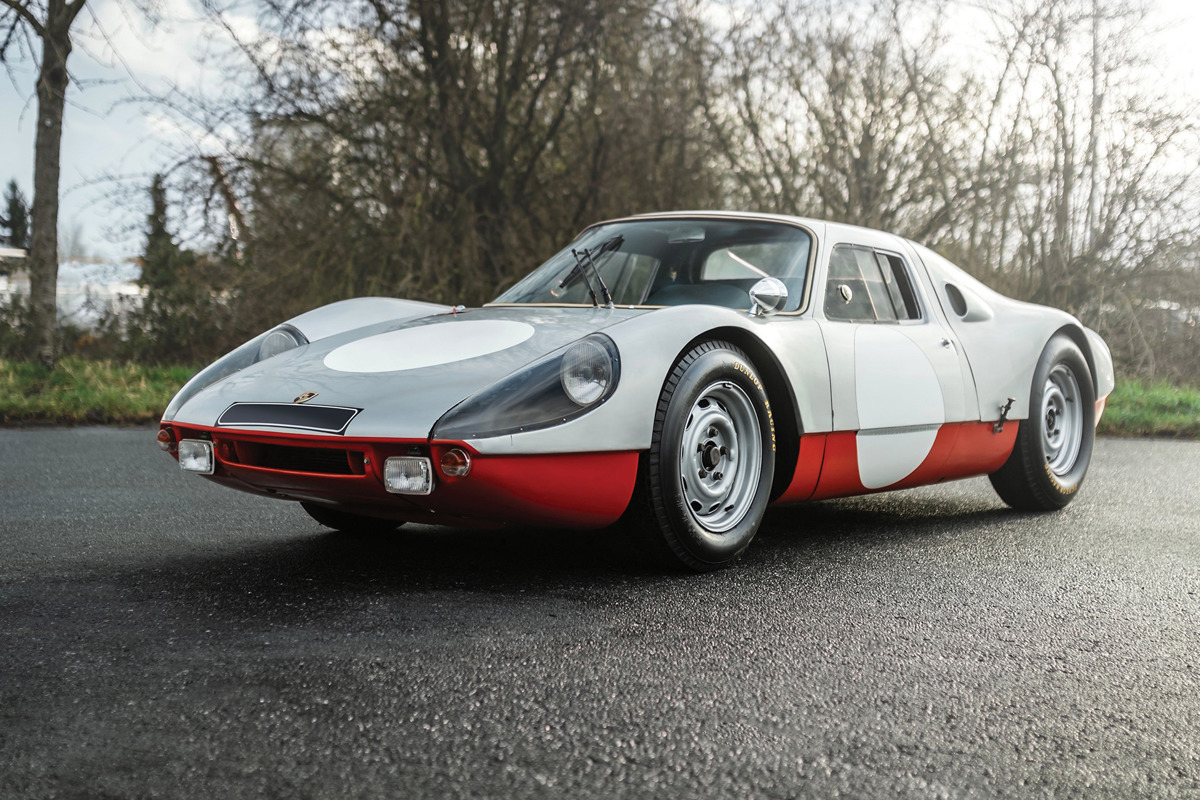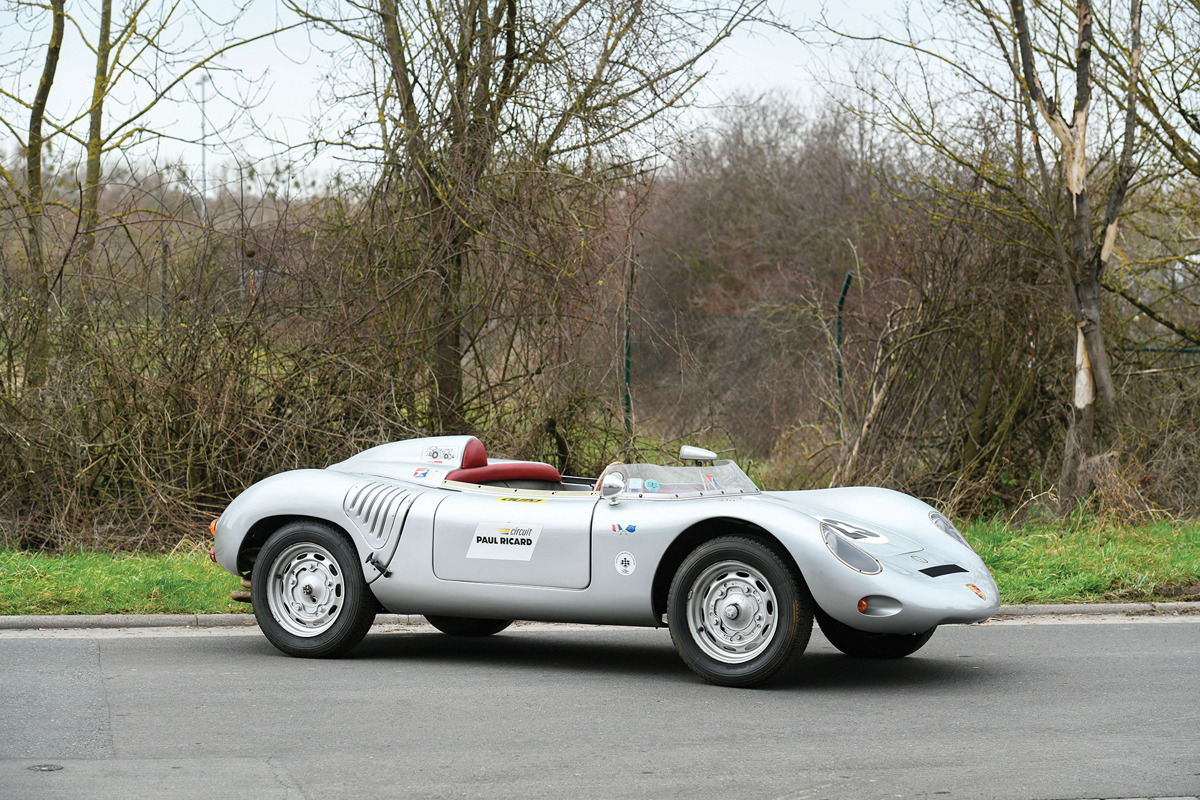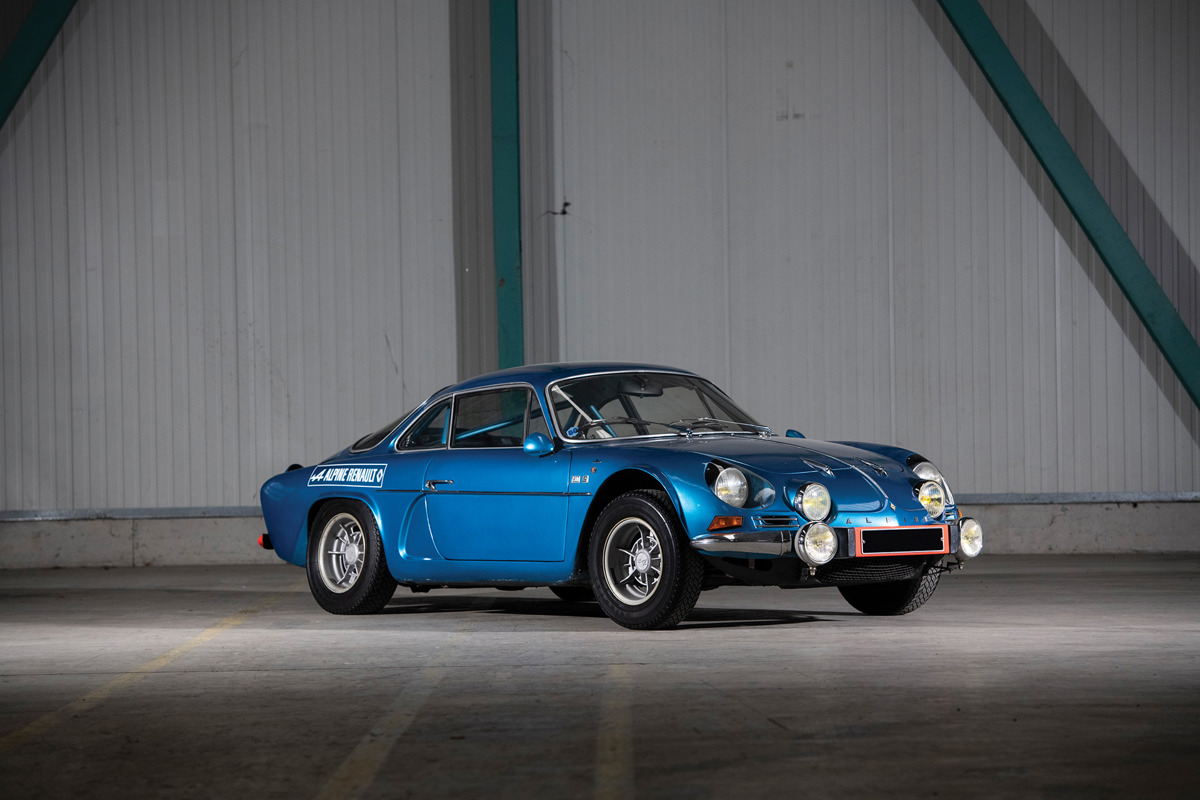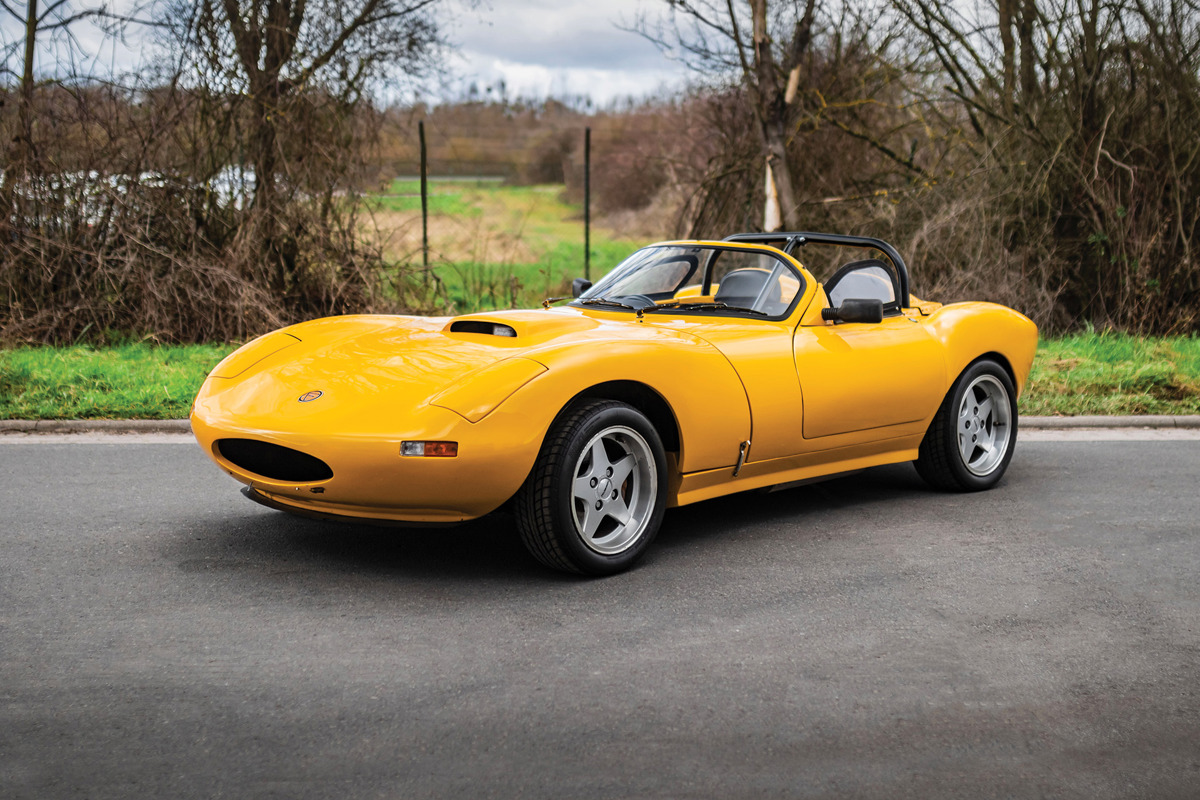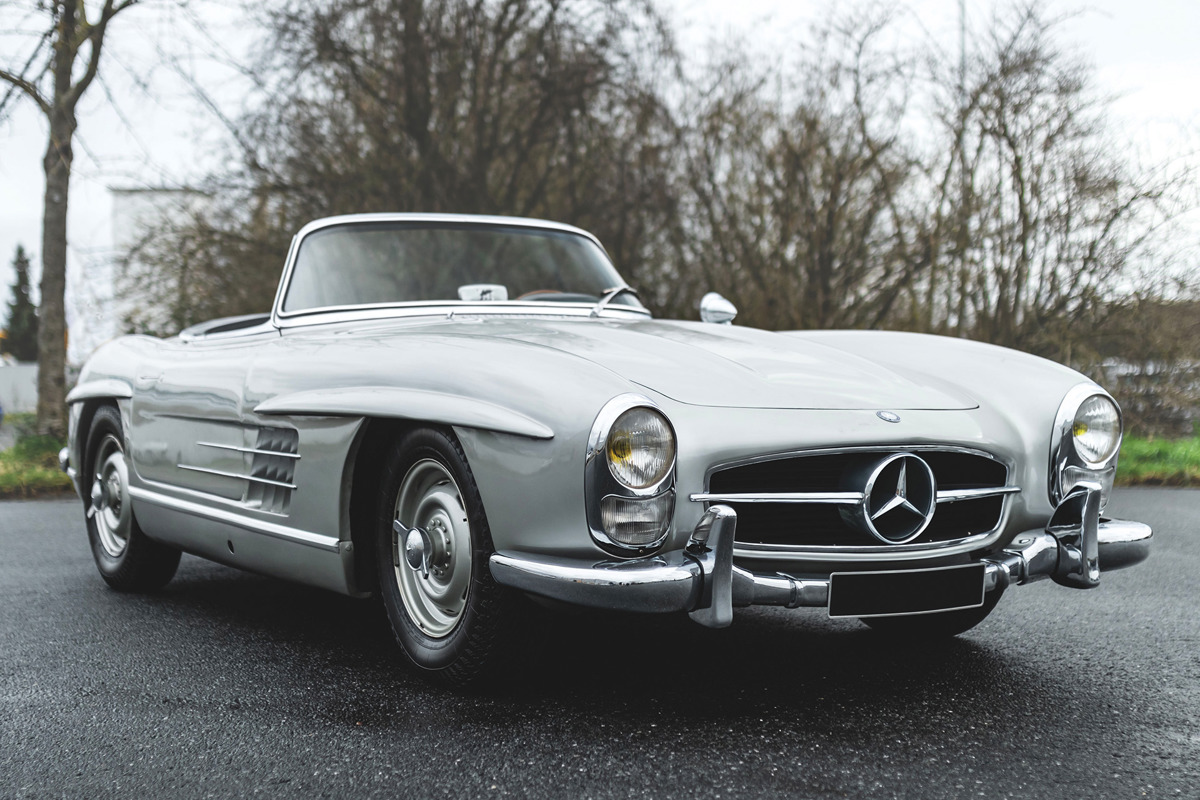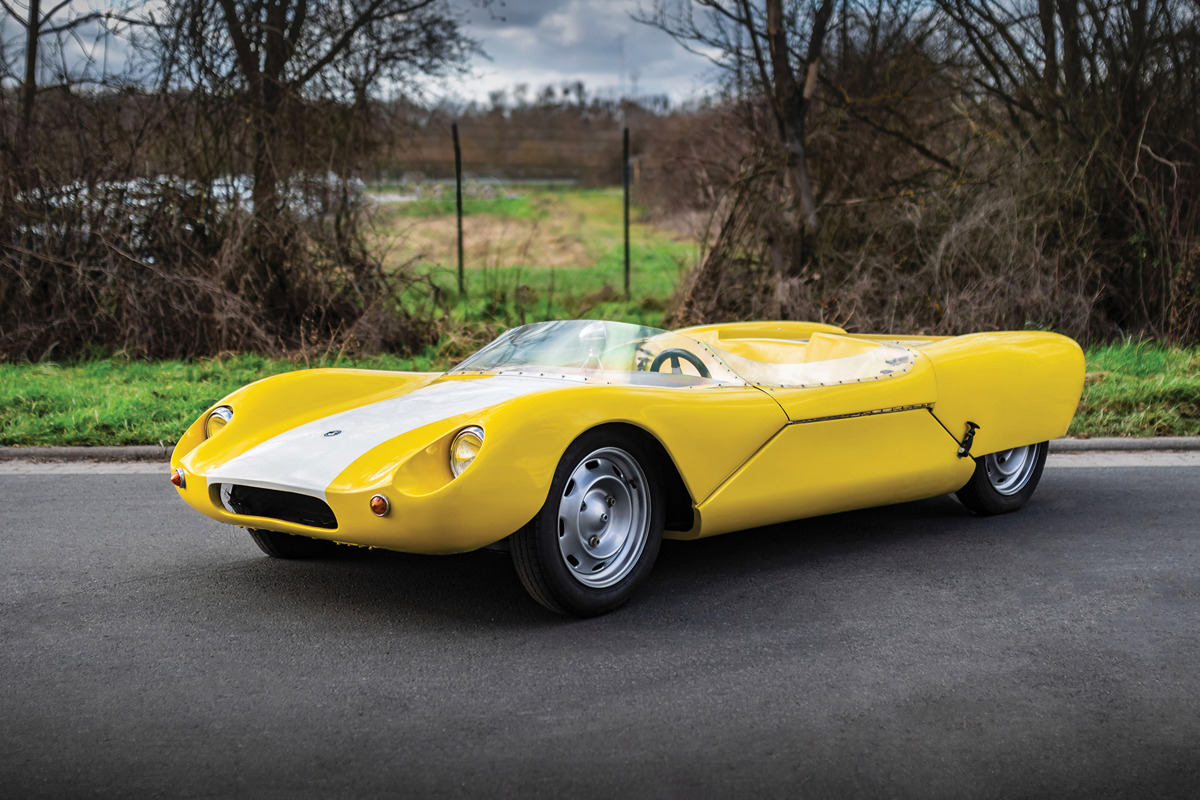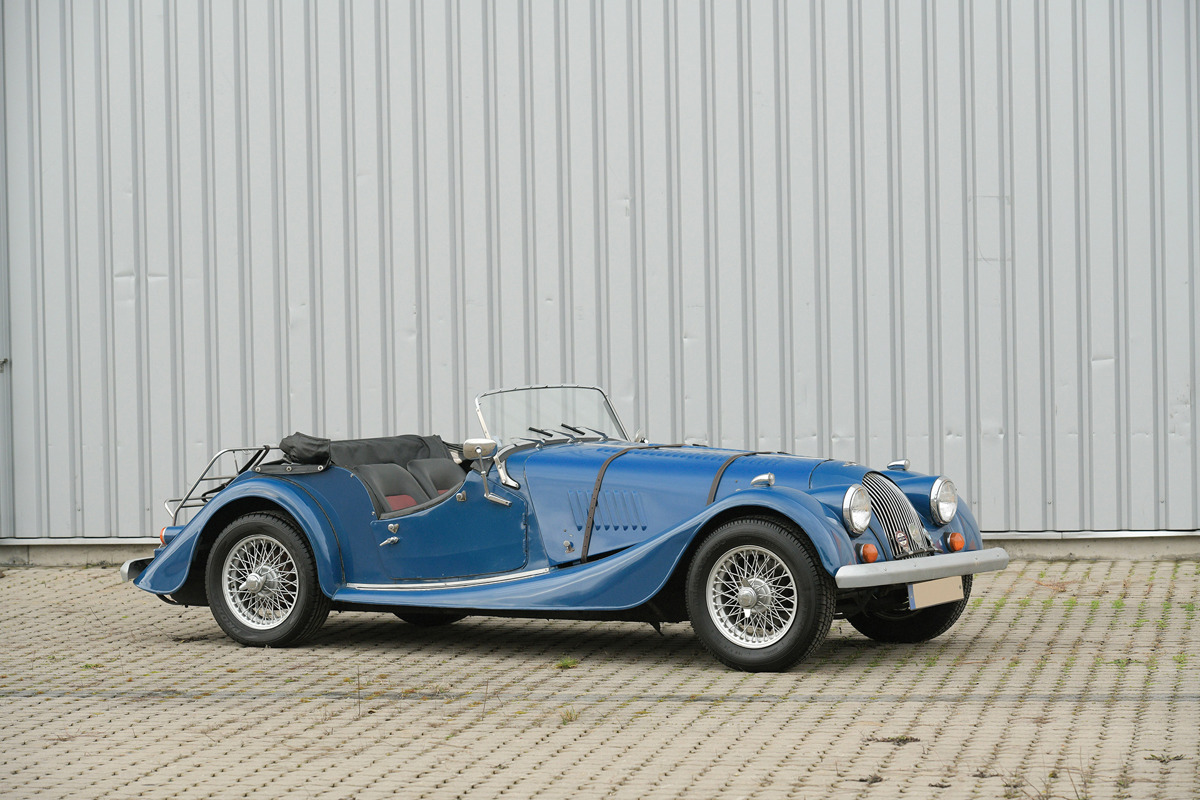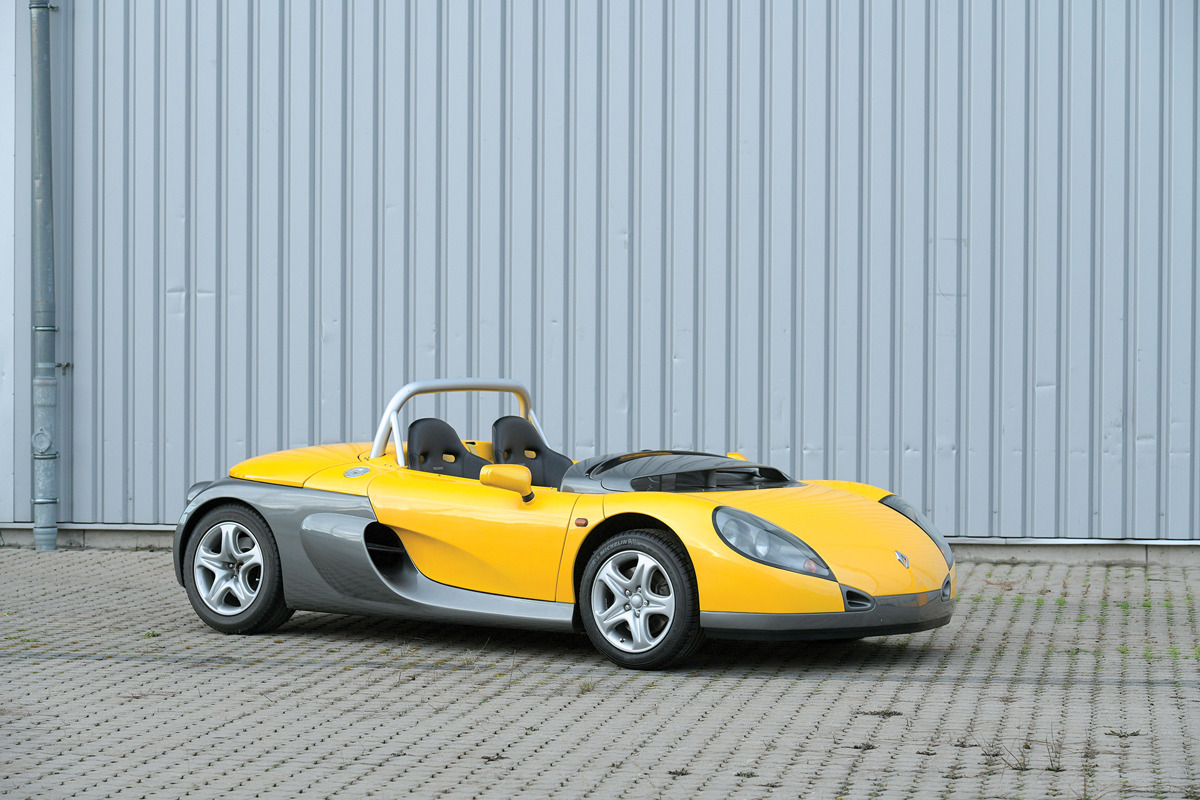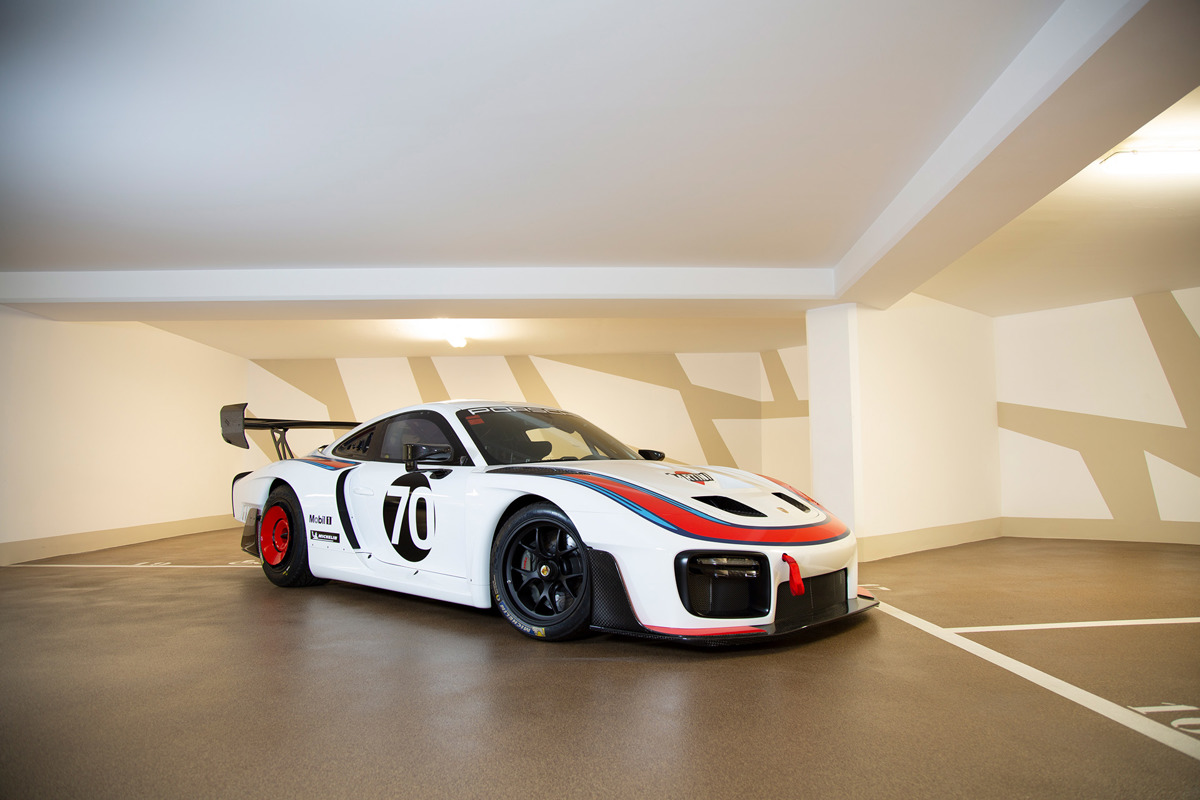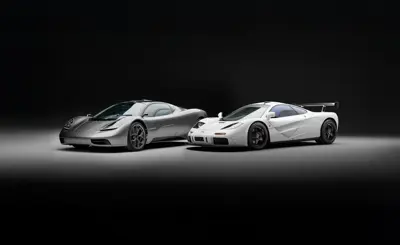1981 Lancia 037 Stradale
Estimate: €420,000 - €520,000 EUR
With its Abarth-designed, supercharged four-cylinder riding well-aft of the rear wheels, this mid-engined 1981 Lancia 037 Stradale bridges the gap between off-road rally champion and still-usable sports car. Made to qualify for the World Rally Championship’s iconic Group B class, this example is the 14th of only 207 built in a partnership between Lancia, Abarth, Dallara, and Pininfarina. Its brutalist coachwork was constructed from a combination of Kevlar and fiberglass for durability and weight savings. A self-locking rear differential and dual rear-mounted shock absorbers were fitted by the factory, though few Stradales were ever used off-road, and today the additions simply increase this example’s road-going capabilities. Benefiting from a recent mechanical service, including a total engine rebuild, this example awaits its next owner/enthusiast driver.
1964 Porsche 904 GTS
Estimate: €700,000 - €900,000 EUR | Offered Without Reserve
This mid-engined Porsche 904 GTS was assembled in the same year as the debut of Porsche’s still-successful 911, and it illustrates the difference between a sports car inspired by racing and a road-legal race car. The 904 leaned much more towards the latter, with both its sleek body shell and part of its chassis composed of lightweight, bonded fiberglass panels. This example competed in a hillclimb in Lodève, France, little more than one month after it was first delivered in 1964. It went on to be raced in rallies and hillclimbs for the next two years. Though Mr. Petitjean is known to prefer Porsche racing cars, he never competed in this chassis—he purchased it in 1993 after a full restoration courtesy of a previous owner. Another addition from a previous owner is an authentic six-cylinder Porsche engine mounted aft of the rear wheels, sure to make for spirited performance at the racetrack after suitable preparation.
1961 Apal RSK 1600 Spider
Estimate: €15,000 - €20,000 EUR | Offered Without Reserve
Another famous motorsport shape with a slightly smaller price tag, this open-top, air-cooled racer is no mere kit car. Inspired by the iconic Porsche 718 RS 60 Spyder, which was victorious at the European Hillclimb Championship and finished second at the World Driver’s Championship in 1960, this tribute was assembled by APAL, a company founded by Formula Vee racing driver Edmond Pery. Formula Vee was a custom-make series based on pre-1963 Volkswagen Beetle chassis, which gave Pery an appreciation for how to wring the most out of the low-cost components, extracting the maximum performance from the rear-mounted, 1.6-liter VW engine. “APAL” stands for “Application Polyester Armé de Liège,” a nod to the lightweight, glass-reinforced polyester resin the company used to craft their body shells (the genuine Porsche Spyder had to make do with heavier hand-formed aluminum). Museum-kept for most of its life, this example is sure to produce impressive performance after restoration.
1971 Alpine-Renault A110 1600 S
Estimate: €100,000 - €120,000 EUR | Offered Without Reserve
Taking its name from the famed Coupe des Alpes rally race, Automobiles Alpine had some of its greatest victories overall at that same race, winning the Alpine Rally in 1968, 1969, and 1971 with their nimble Alpine-Renault A110. This 1971 Alpine-Renault A110 1600 S features the largest capacity engine fitted to the model, a 1.6L four-cylinder from Renault. Thanks to its aluminum-alloy block and cylinder head, the added weight on the rear axle from the more-powerful “Cléon-Alu” motor was negligible. This example has been fitted with a factory roll cage for additional torsional rigidity and fog lamps to complete the rally look. Authenticated by marque historian Gilles Vallerian, and offered in highly original condition, this Alpine-Renault has all the elements of vintage motorsport.
1991 Ginetta G33
Estimate: €15,000 - €20,000 EUR | Offered Without Reserve
In late 1989, even though stewardship of the Ginetta car brand had transferred from the four Walklett brothers who originally founded the company, the new owners thankfully appreciated the brand’s heritage, employing Trevers Walklett’s son Mark to design their next race-inspired sports car. The G33 was a return to form for Ginetta, once again offering a complete car (with chassis and engine) for sale rather than a kit to assemble. Powered by a naturally aspirated 3.9-liter Rover-derived V-8 engine developing what might appear to be a modest 200 horsepower, when added to the G33’s handmade glass fiber-reinforced polyester resin body shell and galvanized chassis, the total weight only amounted to 850 kg (under 1,875 lbs.)—producing modern performance from an old-school setup. Tiff Needell praised the G33’s engaging drive and analog feel in this vintage Top Gear review. This example was the first G33 built. It was used by Ginetta as both a factory prototype and demonstrator and was acquired by Mr. Petitjean in 2008.
1969 Marcos Mini Mk IV
Estimate: €10,000 - €15,000 EUR | Offered Without Reserve
Built with Mini running gear and subframes, the Marcos was offered in five different generations, all featuring fiberglass body panels. Though one might assume the transformation was more aesthetic than performance-based, the British-built Marcos Mini debuted as a competition car, finishing in first place at its first outing at Castle Combe circuit on a rainy day in September 1965 by over a minute, and lapping all of the other cars except for a Ginetta. The fourth generation of the Marcos Mini, like this example, featured longer and taller bodywork, as well as a standard rear hatch and wind-up windows.
1958 Mercedes-Benz 300 SL Roadster
Estimate: €800,000 - €1,100,000 EUR | Offered Without Reserve
While this particular example of the legendary Mercedes-Benz 300 SL roadster was never raced, and though this particular roadster was not made in the traditional British style, the design of this car was nevertheless influenced by motorsport. Featuring the same futuristic, tubular-style spaceframe that supported its “Gullwing” sibling (with some modifications to allow for additional luggage space), the 300 SL Roadster was more powerful than the Coupe by almost 20 horsepower. The SL Roadster’s rear axle was also improved over the Gullwing, with its pivot point lowered by 87mm, reportedly leading to better handling. The final highlight setting this particular example apart from the rest of the SL Roadsters are the “knockoff-style” Rudge wheels, which were born out of competition and fitted to fewer than 30 estimated SL Roadsters from the factory. A rare roadster, indeed.
1962 Lotus Seven
Estimate: €25,000 - €35,000 EUR | Offered Without Reserve
For many motorsports enthusiasts, the Lotus Seven embodies all the qualities one would want in a race car for the road—and nothing else. From the beginning, Colin Chapman’s creation was intended for competition, with every decision offering a trade-off between adding performance while keeping in mind the added mass associated. The Seven’s suspension—independent in the front, with a lively live axel in the rear—served as a prime example of this ethos, balancing modern, mid-century technology with the same fundamental setup that supported fast wheeled transport since the carriage days. Production of the Lotus Seven spanned four generations in total, running from 1957 to 1973. The second-generation “S2” models, like this example, featured a spaceframe that was evolved from the previous generation, simplified and even lighter than its predecessor.
1966 Austin-Healey Sprite Arkley
Estimate: €2,000 - €3,000 EUR | Offered Without Reserve
With the introduction of the Sprite in 1958, Austin intended to replace their version of the Seven sports car with an equally affordable, lightweight sports car. The Sprite was the more-compact choice to the “Big” 3000-series Healey sports cars, but there was an even more exclusive distinction available: The Sprite Arkley. Designed by John Britten and built in the Arkley works in Hertfordshire, England, the original intent of the car was partly in recognition of the famously unpleasant British weather and the propensity of surface rust on untreated steel. As long as the rust damage was not structural, Britten would accept Sprites into his workshop and fit them with fiberglass front-and-rear ends. The end effect was described in-period by Popular Mechanics as “a combination of the Morgan, Triumph TR series and Lotus Seven,” and was nicknamed the “Spridget,” as either Sprite or Midget chassis could be used.
1964 Fournier-Marcadier Barquette FM 01
Estimate: €20,000 - €30,000 EUR | Offered Without Reserve
This low-slung sports racer was featured on the cover of Sport Auto in February 1965 under the headline “Une Lotus Seven a la Francaise.” Though André Marcadier and Marcel Fournier’s collaboration never achieved the same worldwide renown that Colin Chapman’s Lotus enjoyed, a chance encounter between Marcadier and Chapman did reportedly inspire the French-based tubular chassis designer to take the leap from creating competition motorcycles to designing sports racing cars. Like Lotus, the first car from Fournier-Marcadier was lightweight—weighing at 1,014 lbs, its fiberglass body adding up nearly 90 lbs lighter than the aluminum-bodied Lotus Seven. The FM was powered by an inline four-cylinder engine, shared with the Renault and Gordini 8. One of only 50 produced, this example was treated to a cosmetic refresh in 1997, with a new paint job and interior.
1980 Morgan 4/4 1600
Estimate: €15,000 - €20,000 EUR | Offered Without Reserve
It’s worth pointing out that Lotus did not, in fact, own a monopoly on low-slung, British roadsters. The Morgan Motor Company had essentially been making a version of the 4/4 from 1936 until the present day, with a brief pause in production due to World War II. Though various powertrains and seating configurations were offered over eight separate generations, the 4/4’s name always indicated that the Morgan in question was fitted with four wheels (distinguishing it from the company’s 3-Wheeler) and was powered by a four-cylinder engine. This 4/4 1600 is from the sixth generation of 4/4 development, built from 1968 until 1993, and features a 1.6-liter Type 2265E Ford Kent Crossflow engine, which was originally rated by the factory to output 95.5 horsepower. Wearing an attractive shade of dark blue over a two-tone black-and-red interior, this Morgan proves that the fundamentals of what it takes to deliver an engaging drive have remained much the same since the beginning of motoring.
1996 Renault Sport Spider
Estimate: €20,000 - €30,000 EUR | Offered Without Reserve
Rounding out this batch of race cars for the road, this Renault Sport Spider was designed to establish Renault Sport as a separate brand, making a statement in the process about the resurgence of fast French cars. Like the 5 Turbo and Clio, the Spider was intended to have its own Renault-supported, one-make racing series, which ran for four years between 1995 and 1999. However, unlike many motorsport-related road cars, the Renault Sport Spider was not merely sporting in appearance only. In order to minimize internal vibration, the engine and gearbox were combined into one unit, mounted behind the driver’s seats. The Spider featured scissor-style doors which had to be opened by reaching inside the car—the engineers did not want an exterior door handle to add weight and spoil the overall aerodynamics. A windscreen was optional starting in 1997; this example was fitted with an aero screen device to diffuse oncoming air without the additional weight of a glass window. A statement of extreme speed, this example is one of only 1,800 built at the Alpine factory in Dieppe.
2020 Porsche 935 ‘Martini’
Estimate: €1,275,000 - €1,375,000 EUR
All the best auctions include “one more thing,” and this late-model Porsche 935 is the perfect finale to wrap up our piece about race cars for the road. The original Porsche 935 was an all-out endurance racer, racking up wins at Sebring, Daytona, and an overall win the 24 Hours of Le Mans in 1979. Though both iterations of the 935 were built to FIA specifications, the modern approach taken by Porsche engineers to recreate their famed racer for the 21st century was not bound by homologation rules. As such, the 935 was able to borrow technologies from other advanced Porsche motorsports designs, including an overall silhouette from the “Moby Dick” 935/78 extended body variants, LED lighting on the endplates of a massive rear wing, like those on Type 919 LMP1 race cars, “cookie-cutter”-style dual exhaust megaphones reminiscent of those on the Porsche 908 and RSR, and a balsa wood shift lever similar to those featured in the Porsche 917 variants that dominated the Can-Am series. With zero miles and in virtually as-new condition, the new owner of this purpose-built Porsche will get to decide which of the world’s racetracks gets the inaugural drive in this spectacular race car.

